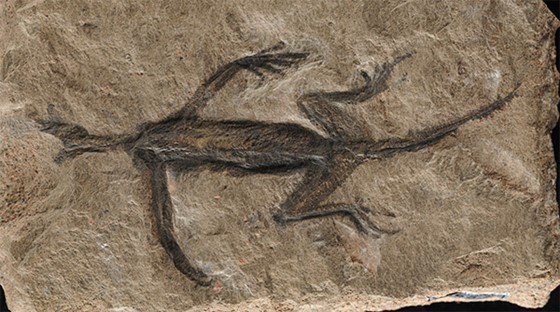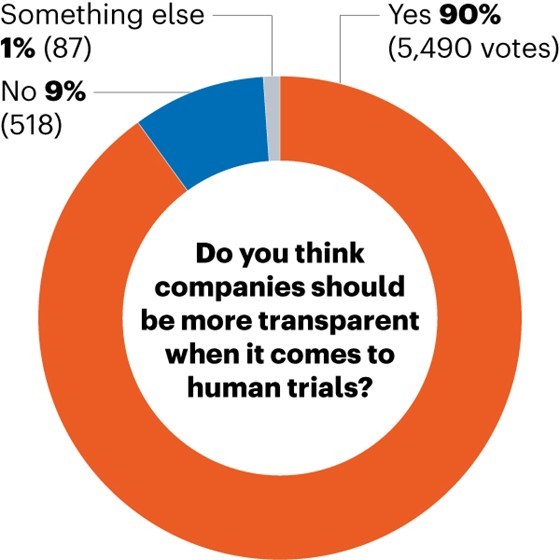Hello Nature readers, would you like to get this Briefing in your inbox free every day? Sign up here.

A young orangutan pulls its mother‘s hair.Credit: BOS Foundation BPI
Young great apes like to playfully hit or poke or pull the hair of older apes — just like human children do to adults. A study of zoo-kept bonobos, chimpanzees, gorillas and orangutans suggests that the cognitive tools for ‘joking around’ might date back at least 13 million years ago, to our last common ancestor. “Playful teasing is a thing,” says anthropologist and study co-author Erica Cartmill. It brings up questions “about what animals understand about other animals’ minds, expectations and the strength of their relationships”, she says.
The Washington Post | 5 min read
Reference: Proceedings of the Royal Society B: Biological Sciences paper
Researchers have created a calcium—oxygen battery that works at room temperature and is rechargeable for 700 cycles. Calcium—oxygen batteries have a theoretical energy density comparable to lithium-ion batteries. But they could be cheaper because there’s a lot more calcium on Earth than there is lithium. Making rechargeable calcium batteries has been difficult because, during use, the battery creates calcium compounds that are hard to break down again. This version solves this with a new electrolyte and cathode design.
Chemistry World | 4 min read
Reference: Nature paper
What was thought to be a 280-million-year-old fossil of one of the oldest reptiles, Tridentinosaurus antiquus, is mainly a fake. The dark outline around the small, lizard-like animal, which was found in 1931, had been presumed to be carbonized soft tissue. Researchers who reanalysed the specimen concluded that this outline is mostly black paint, although the hind limbs are genuine fossilized bone.
Ars Technica | 6 min read
Reference: Palaeontology paper

Applying protective coatings used to be common in the 1930s when this fossil was found, explains palaeobiologist and study co-author Valentina Rossi. “Unfortunately, in the case of Tridentinosaurus, the mechanical preparation did most of the damage and then the application of a black paint created the illusion of a lizard-like animal impression on the surface of the rock.” (Dr Valentina Rossi)
Reader poll

In late January, entrepreneur Elon Musk announced — in a brief Twitter post — that his company Neuralink had implanted its ‘brain-reading’ device into a person for the first time. Experts were cautiously excited about the new system but frustrated about the lack of public information about the trial.
An overwhelming majority of readers who responded to our poll last week agreed that companies should be more transparent when it comes to human trials. But some readers pointed out that forcing companies to release all details publicly might discourage investment in high-risk, high-reward research.
“I think the approach taken by the European Union through the recent clinical trial regulation is a balanced one,” says Vlad Dumitrescu, a clinical research associate working in biopharma. “Companies are required to post on a public platform information that concerns the general public regarding study procedures, patient materials, etc. But, the sponsors are also allowed to protect information that would give competitors a competitive advantage.”
Features & opinion
At the Lawrence Livermore National Laboratory, “we want the weird samples”, says Audrey Williams, director of its Forensic Science Center. It’s the only place in the United States certified to analyse extremely dangerous substances such as weapons-grade uranium. Around the turn of the millennium, it even helped to convict a serial killer who had murdered patients while working in a hospital. Scientists at Livermore developed an elaborate analysis to prove that 6 out of 20 exhumed bodies of the killer’s suspected victims contained lethal amounts of a paralysing chemical.
Undark | 8 min read
Take a nostalgic tour of forgotten tourist traps in the latest short story for Nature’s Futures series.
Nature | 6 min read
Andrew Robinson’s pick of the top five science books to read this week includes a superbly illustrated study of seaweeds and a beautifully written book on the concealed connections between astronomy and civilization.
Nature | 4 min read
Smoking cigarettes scars the body’s immune system for years after quitting. Researchers investigated 1,000 people’s immune responses by exposing their blood samples to various challenges, such as bacteria. In active smokers, both general and specific immune response was affected. But even in people who stopped years ago, an effect on crucial T cells seemed to linger. “Having higher T cell responses is seen in many autoimmune diseases”, such as rheumatoid arthritis explains immunologist and study co-author Darragh Duffy. “There’s still a lot to uncover.”
Nature Podcast | 22 min listen
Subscribe to the Nature Podcast on Apple Podcasts, Google Podcasts or Spotify, or use the RSS feed.
